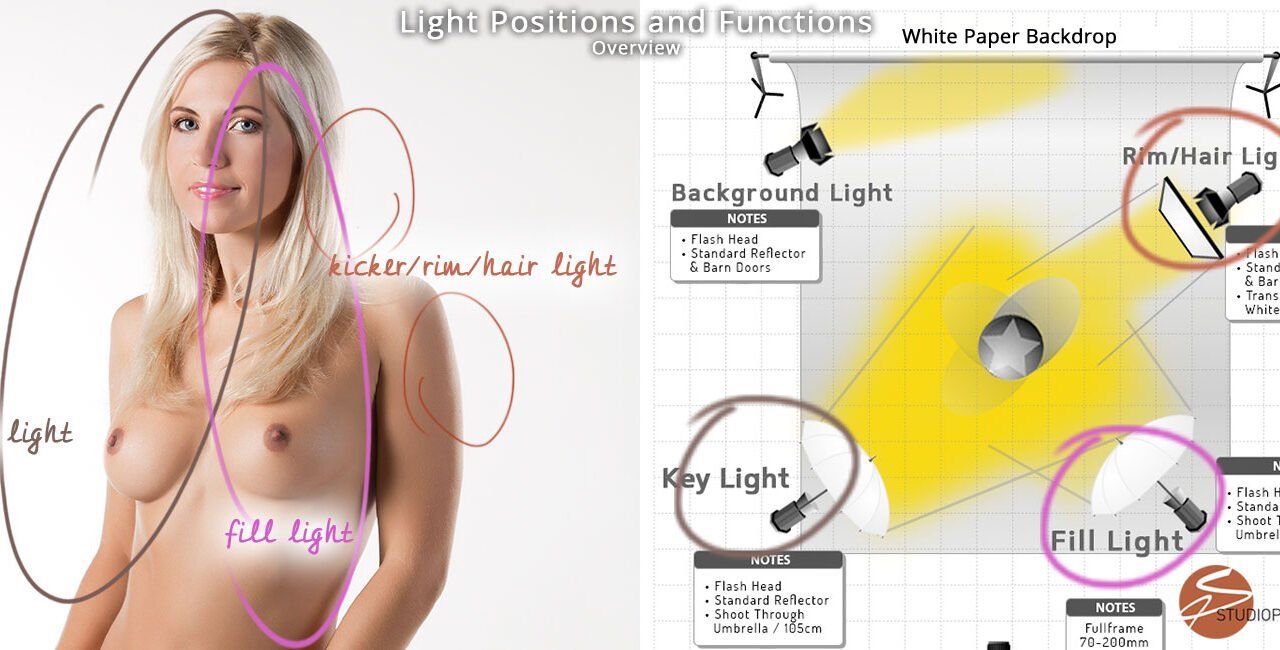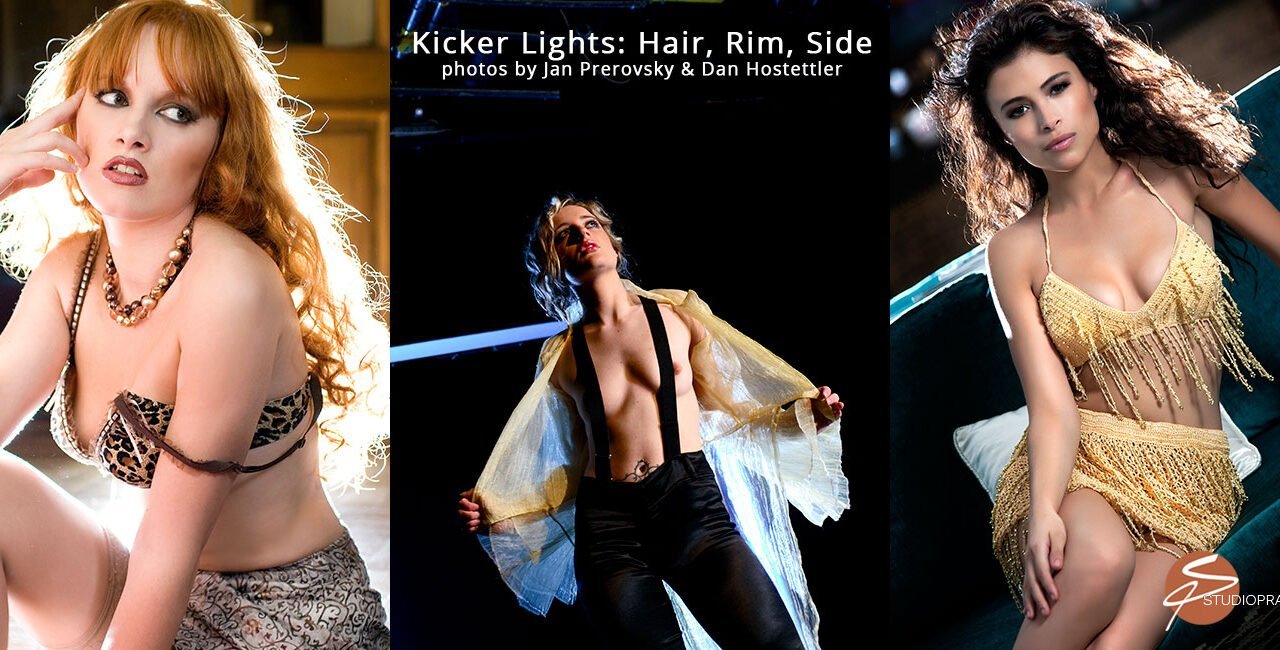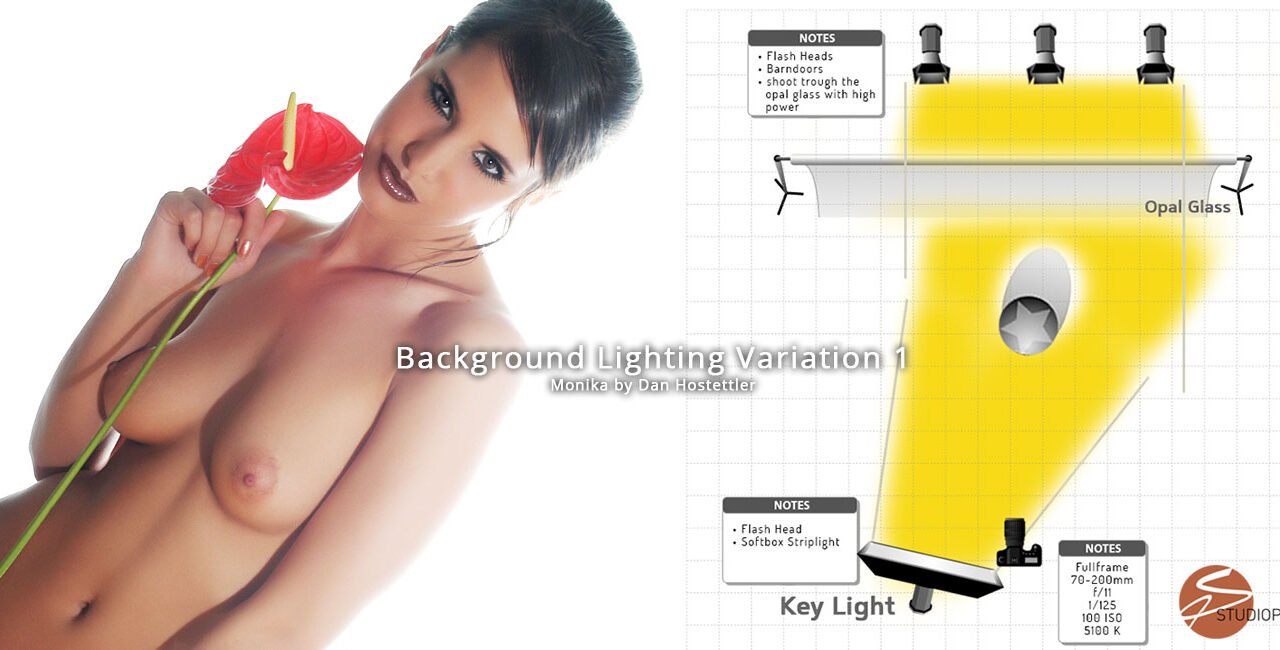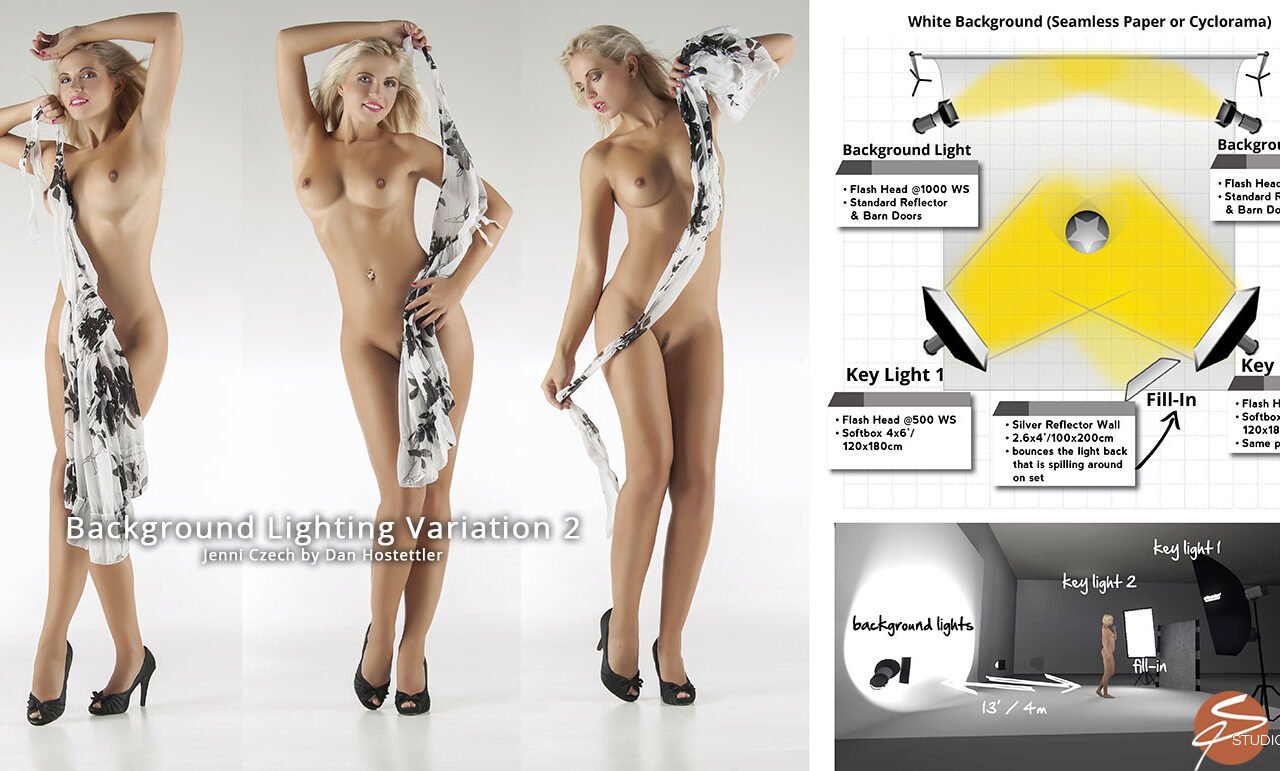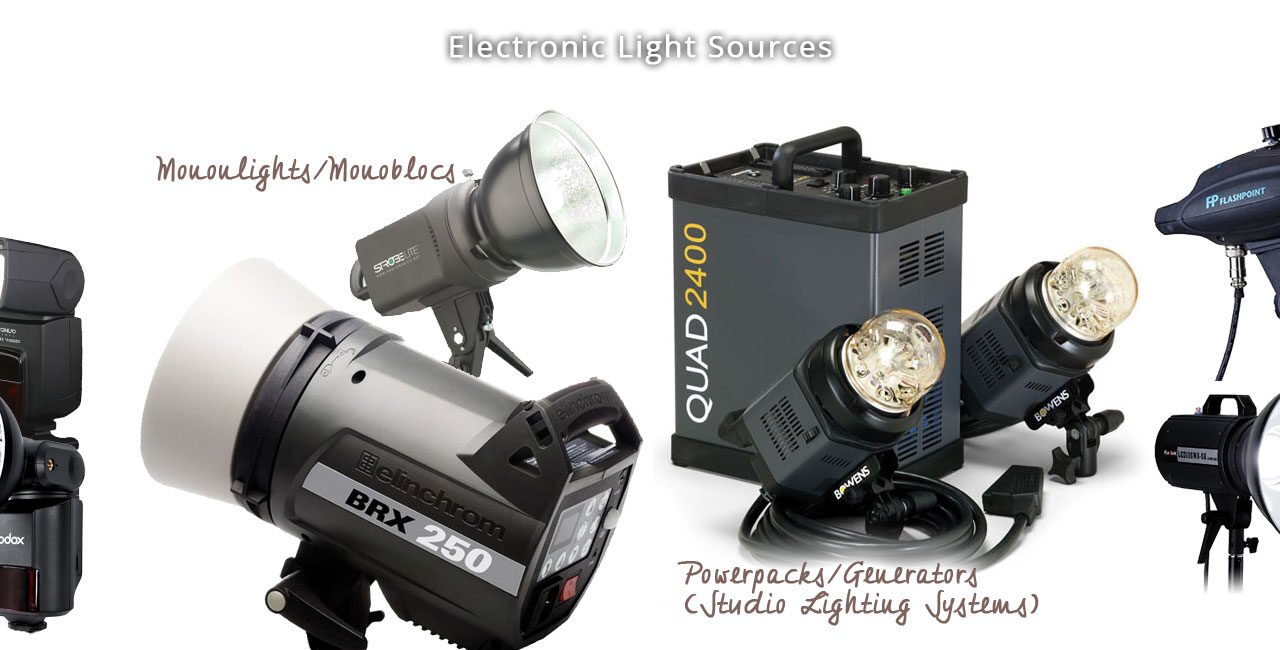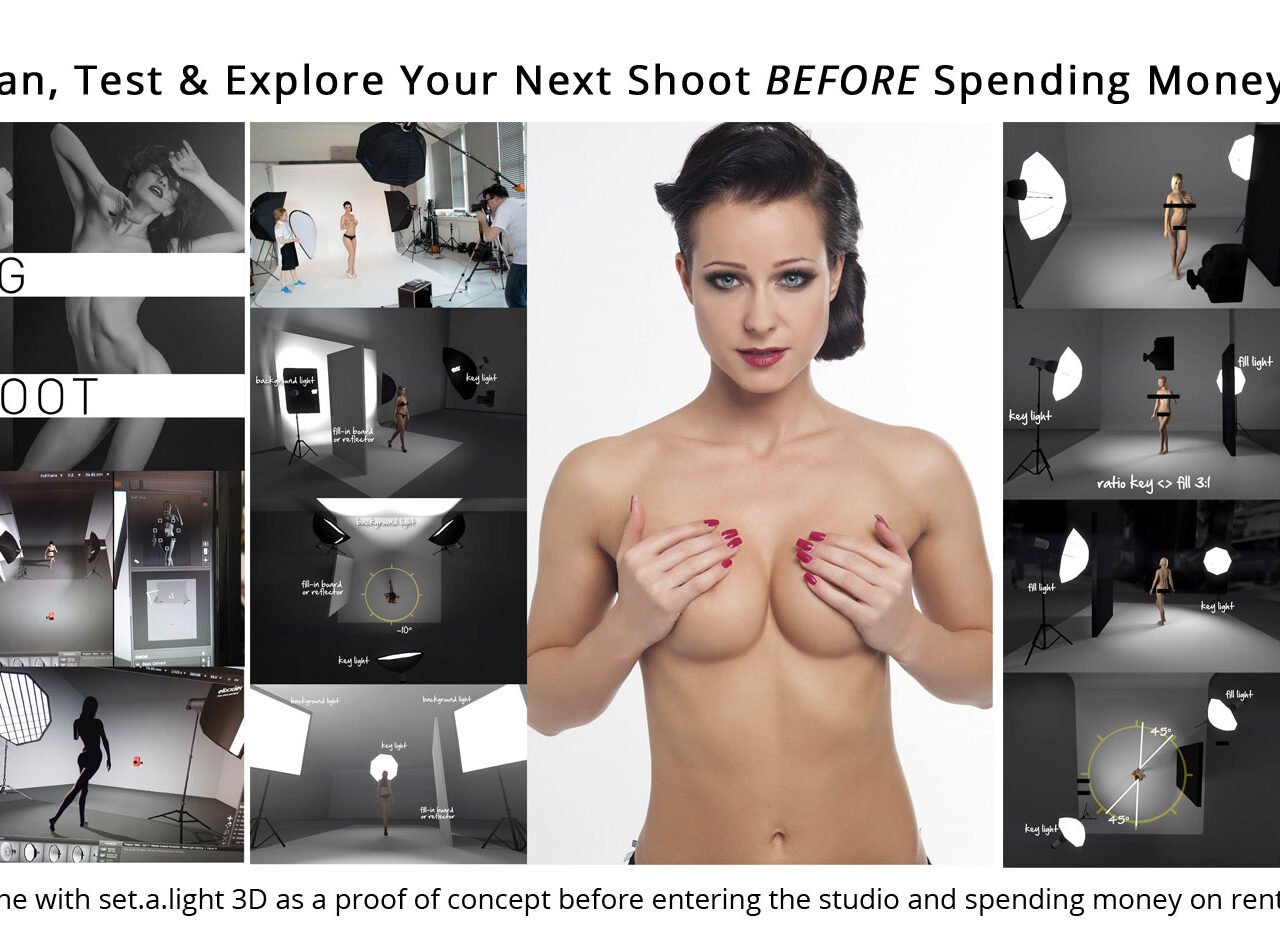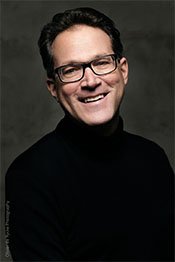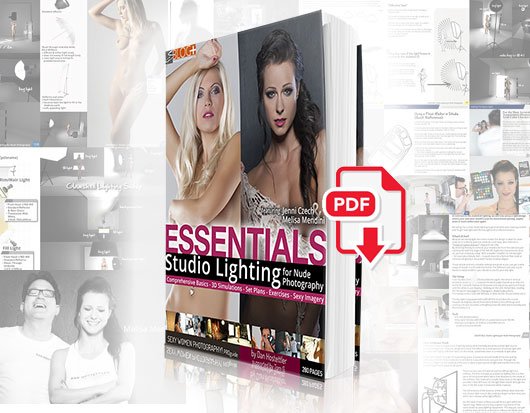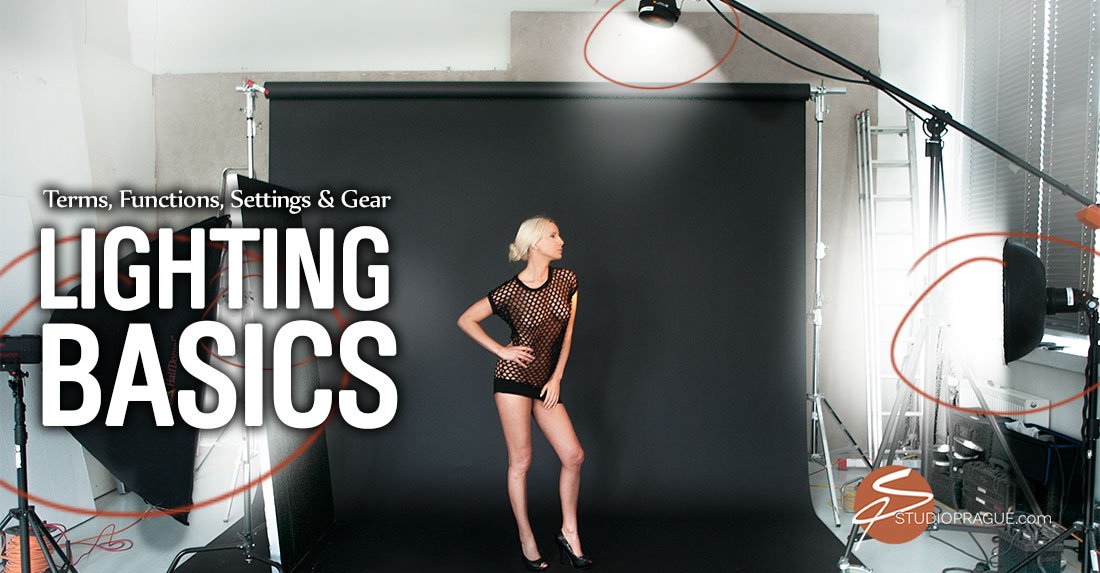
[Part 13/23 | Module 3: MASTERING THE LIGHT]
Practice with photo light as much as you can. Do it in your home space, at your computer ,on location or even rent a studio. Only practice makes perfect.
There are more than a handful of elements that are key to awesome women photography and lighting is one of the most important. What follows in this feature is some information designed to help you understand the terms and functions of lighting and the gear that’s commonly used.
Photo Light Positions And Functions
Each light you might choose to use for your various lighting setups has a name/term that describes it. These terms have been around for a long time. Many of these terms, and how and where they’re placed/set and used, originated in the early days of motion picture photography. The most notable lighting position terms are:
- Key or Main Light
- Fill Light
- Kickers and Hair Lights (also known as Accent Lights/Rim Lights)
- Background Lights
Key/Main Light
The key or main light is your main light source used to illuminate your subject for the purpose of photographing her. Your key light might be your only light if you’re lighting your model with one light, as in one-light portraits. When the sun is your main source of illumination, the sun itself is your key light.
Generally, your key light is the most important light in your lighting setups and any other lights/illumination you might add are, for the most part, subordinate to your key light. Not employing a key light will often result in a silhouette effect or an underexposed image of your model.
Fill Light
A fill light is used in ways that match its name. It’s used to “fill” dark areas or shadows with light to a certain degree. The fill light provides a less intense light/illumination than the key light.
If the fill light is providing a greater amount of illumination (on your model) than the key light, it’s no longer a fill light. It has become, in effect, your key light. Because the fill light is less intense than the key light, it won’t cast a shadow on your model because your key light will overpower the light provided by the fill light.
Kickers And Hair Lights
Kickers are lights used to provide accents (on your model) via highlights. They can be very effective in their use, both for visually separating the model from the background, as well as for being aesthetically pleasing.
Kicker lights are sometimes also called side-lights, back-lights, and hair lights. The naming simply depends on which areas of the model’s head and/or body the kickers are aimed at providing highlights. The lighting produced by kickers is also sometimes referred to as edge-lighting and rim-lighting.
Background Lights
Background lights, as the name implies, are used to light backgrounds. A classic example of the use of background lights is when the model is placed in front of a white seamless and the photographer wishes to illuminate the white seamless to produce white for an all-white (or gradient) background.
Lighting Devices
The list of lighting equipment is a long one. There are many types of lighting devices you can employ.
- Electronic lighting devices are referred to as artificial light, as opposed to sunlight which is considered natural light.
- Ambient or available light refers to whatever light happens to exist in your shooting environment.
- Ambient or available light can be artificial, natural, or a combination of both.
Artificial light used for people and other sorts of photography falls into four main categories:
- Small portable lighting devices called speedlites, speedlights, and by other names.
- Monolights or Monoblocs sometimes referred to as studio strobes.
- Packs-and-Heads, i.e., hard-cabled power generators and “heads” that include flash tubes.
- Continuous light sources, e.g., tungsten, fluorescent, or incandescent lighting sources, sometimes also called “hot lights,” although the name doesn’t apply to florescent lighting sources since fluorescent lights don’t get hot the way tungsten and incandescent lights do.
What Lighting Devices Are Best For Nude & Glamour Lighting?
There’s no one, correct, answer to that question. Different types of artificial lighting make more or less sense depending on several different factors, including what is available to the photographer. Is using a speedlight as effective as using a studio strobe? Sometimes, yes. Other times, no. Why? Because, generally speaking, studio strobes provide more output power, i.e., more powerful light with a further reach, than a speedlight can provide. But then there are times when employing speedlights is more practical because of their size, portability, and because they’re powered by simple, throw-away or recyclable, household batteries.
Does nude and glamour photography require the so-called “best,” costliest, and highest-end lighting equipment for you to snap the best glam and nude photos? Again, there’s no one, single, answer to that. Some will say “light is light.” And while there’s a fair amount of truth to that statement, different lighting gear at different price points are manufactured to different levels of quality and different specifications. Deciding what’s best for you requires taking some time to research the various types of artificial lights, their best uses, their strong points, and weak points, what other photographers say about them (product reviews) and, often most importantly, how much money you have to spend or are willing to spend.
Having said all that, it can be important for you to have “good” equipment to work with. Better gear won’t create basic light that’s any better, i.e., better or different from the light produced by “lesser” gear. The light itself, that is, the photons comprising it and the electrons used to create it, while being the same regardless of the cost or quality of the gear aren’t the only factors that should affect your decisions. Better equipment, of course, usually comes at a higher monetary price.
Studio or portable strobes are amongst some of the more expensive lighting equipment available. One advantage to them, however, is they are more powerful and versatile tools than, say, speedlites and, for the most part, continuous lighting devices or hot lights. The results you can achieve with studio lighting devices will generally offer you more versatility in choosing light modifiers. Most of them also have what’s called “pilot” or “modeling” lights which are continuous lights that don’t impact your exposure but allow you to see how your light is falling on your model or any other things the light may be aimed at. Speedlights don’t have modeling light capability. Continuous lighting, of course, allows you to see what your lights are doing at all times when they’re turned on. Pilot or modeling lights also help your camera’s auto-focus system to properly focus.
Speedlights, Speedlites, And Small Flash Instruments
Small flash instruments (or as Nikon calls them, “speedlights,” whereas Canon calls them “speedlites”) are also quite versatile in many ways. Their main drawback (versus studio strobes) is that they’re not as powerful as studio strobes. When, for instance, you’re modifying a light source with a reflective umbrella, a softbox, or some other modifier, you’re further reducing the power output (intensity) of the light device. There are times when this doesn’t matter much as a speedlight, modified or not, will deliver adequate lighting power. But other times when using a speedlite along with sunlight as an example, small flash instruments may not provide as much power as you want or need.
Keep in mind the adage: Use the right tool for the job. There are plenty of times when a speedlite is the right tool for the job while just as many times a studio strobe is the right tool for the job. Occasionally, of course, you won’t be able to use the right tool for the job for a variety of reasons. But your experience, as it grows, will teach you to make-do with tools that might not be as “right” as other tools.
Lighting Modifiers
Modifiers perform exactly as they the word “modify” implies: The modifier modifies the light and the output of the light source or device. Modifiers may diffuse (soften) the light, make it harder and more specular, or they might redirect the light. Most often, modifiers are attached to the front of the light source or are set somewhere in front of the light source in order to modify, reflect, or control the light. Various modifiers can be used with any light source from studio strobes, to speedlights, to continuous lights, to natural sunlight.
Here’s a list of commonly used lighting modifiers:
- Soft-/Octo Boxes
- Umbrellas (reflective and shoot-through)
- Beauty Dishes
- Scrims & Flags
- Standard Reflectors
- Honeycombs & Grids
- Barn Doors & Snoots
- Flags & Scrims
BTW: All the equipment that is used to hold or to attach cameras, lights, modifiers and more is called “grip.” Grip equipment includes light stands, arms, clamps, and much, much more.
Practice Various Options
The more aware you are of the many options you have for lighting and modifying light, the more versatile and effective you’ll become as a photographer. Knowledge and awareness, of course, isn’t enough. You’ll need to practice with various types of gear to become proficient in their uses and applications. Nothing will do more to help you become a better photographer than learning and practice…
The more you learn and practice, the more confident and at ease you’ll become using your gear. Your confidence and ease with your gear will be noticed by your models and when your models are more confident in your skills, the better job they’ll do in front of your camera.
Testing Light Modifiers Without A Studio (For Free)
You don’t own every single modifier we talked about? Are you missing out one or the other strobe?
Or is it that you don’t want to spend a lot of money on rentals before you actually know what you are doing?
Listen, I have a truly awesome solution for you: set.a.light 3D – a tool I am using myself all the time for planning, experimenting, reassuring and illustrating my lighting setups!
I can honestly present this software to you without any reservations as I am very convinced of its value and help for reaching better results in exchange for very little investment costs.
Don’t lose valuable time and money with experiments regarding your lighting setups and mood designs in the studio. You can very comfortably create and try out almost every imaginable studio-light-setting with set.a.light 3D.
set.a.light 3D enables you to easily prepare your shooting and plan the smallest detail, even before you set foot in the studio – no matter where you are. All you need is a computer and ideas! Starting today, you will save a lot of time and money with lighting setups and configuration. Experimenting and implementing your ideas and visions spot on in every detail has never been easier!
Thanks for reading.
set.a.light 3D Basic & STUDIO (Software)
set.a.light 3D STUDIO is the world’s first photo studio simulation, with which you can build lighting setups in advance. It’s the perfect photography studio simulator.
Prepare your shooting easily and plan the smallest detail, even before you enter the studio- all you need is a computer and ideas! Save a lot of time and money with experimenting & implementing your ideas & visions before you get on spot.
Author: Dan Hostettler 

A traveler at heart, inspired by women, working along Swiss precision.
Dan is a mediapreneur, photographer, author of several books, owner of StudioPrague and Founder + Editor in Chief of SexyWomenPhotography.com. Being a successful photographer for more than 15 years Dan got internationally published and featured on/in GQ Online, The India Times, FashionONE TV, FotoTV, GoodLight Mag, amongst many others.
Dan is currently residing and working in Prague, CZ, conducting nude photography workshops, productions and pushing educational formats to a new level.
Consider a Small Donation?
Your donation helps to sustain, create and regularly update the free content for you.
I love offering my knowledge to you and a small token of appreciation helps to keep the lights on.
Thank You!
Consider a Small Donation?
Your donation helps to sustain, create and regularly update the free content for you.
I love offering my knowledge to you and a small token of appreciation helps to keep the lights on.
Thank You!

